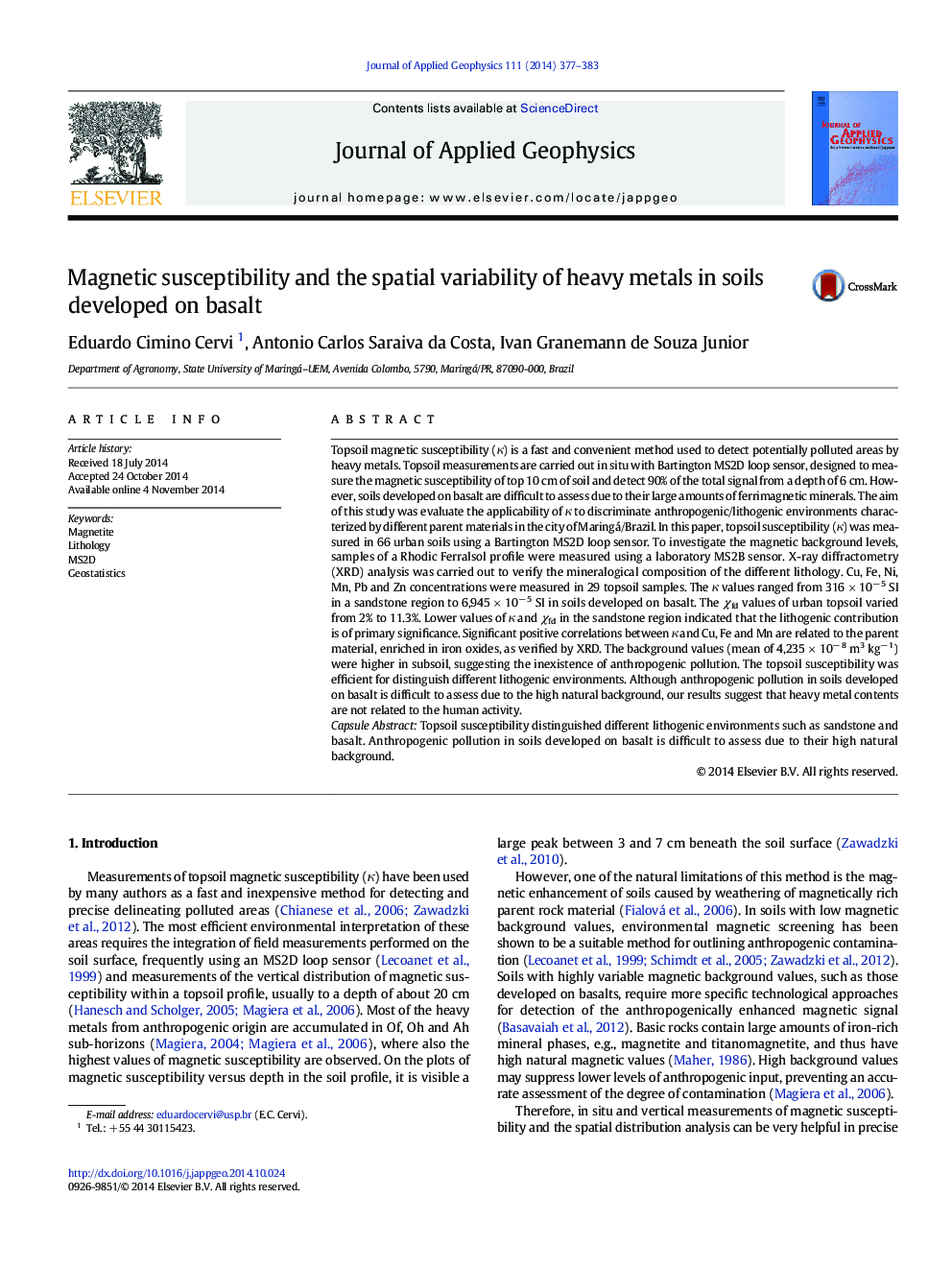| کد مقاله | کد نشریه | سال انتشار | مقاله انگلیسی | نسخه تمام متن |
|---|---|---|---|---|
| 4740119 | 1641140 | 2014 | 7 صفحه PDF | دانلود رایگان |
• κ is efficient for distinguish lithogenic environments such as basalt and sandstone.
• Lithogenic contribution is of primary significance for magnetic properties.
• Correlation between heavy metals and κ are related to the parent material.
• Background values suggest the inexistence of anthropogenic pollution.
Topsoil magnetic susceptibility (κ) is a fast and convenient method used to detect potentially polluted areas by heavy metals. Topsoil measurements are carried out in situ with Bartington MS2D loop sensor, designed to measure the magnetic susceptibility of top 10 cm of soil and detect 90% of the total signal from a depth of 6 cm. However, soils developed on basalt are difficult to assess due to their large amounts of ferrimagnetic minerals. The aim of this study was evaluate the applicability of κ to discriminate anthropogenic/lithogenic environments characterized by different parent materials in the city of Maringá/Brazil. In this paper, topsoil susceptibility (κ) was measured in 66 urban soils using a Bartington MS2D loop sensor. To investigate the magnetic background levels, samples of a Rhodic Ferralsol profile were measured using a laboratory MS2B sensor. X-ray diffractometry (XRD) analysis was carried out to verify the mineralogical composition of the different lithology. Cu, Fe, Ni, Mn, Pb and Zn concentrations were measured in 29 topsoil samples. The κ values ranged from 316 × 10− 5 SI in a sandstone region to 6,945 × 10− 5 SI in soils developed on basalt. The χfd values of urban topsoil varied from 2% to 11.3%. Lower values of κ and χfd in the sandstone region indicated that the lithogenic contribution is of primary significance. Significant positive correlations between κ and Cu, Fe and Mn are related to the parent material, enriched in iron oxides, as verified by XRD. The background values (mean of 4,235 × 10− 8 m3 kg− 1) were higher in subsoil, suggesting the inexistence of anthropogenic pollution. The topsoil susceptibility was efficient for distinguish different lithogenic environments. Although anthropogenic pollution in soils developed on basalt is difficult to assess due to the high natural background, our results suggest that heavy metal contents are not related to the human activity.Capsule AbstractTopsoil susceptibility distinguished different lithogenic environments such as sandstone and basalt. Anthropogenic pollution in soils developed on basalt is difficult to assess due to their high natural background.
Journal: Journal of Applied Geophysics - Volume 111, December 2014, Pages 377–383
